The Chinese name of Henery's Monachosorum is "稀子蕨" (Xi-zi Fern), "稀子" means "few children". There is another Chinese word "攜", which is pronounced the same as "稀", meaning "to carry". If you call it "攜子蕨" that means "fern with children". Althought "攜子蕨" is not the correct name in Chinese, it is also appropriate to say that Henery's Monachosorum is "carrying children" because it is a fern that grows adventitious buds. On the surface of its rachis and even the pinna rachis, it grows one to several adventitious buds which provide vegetative reproduction and look like it is carrying children. The new adventitious buds look like fists clenched upwards. Each finger of the fists will grow into a frond. When the adventitious buds fall to the ground they will root downwards and become young plants independently. Adventitious buds can be said to be an important feature of Henery's Monachosorum.
Henery's Monachosorum
(2016.11.11 Taiwan)
About Henery's Monachosorum
| ◆ | Classification: Genus Monachosorum; Family Dennstaedtiaceae | |
| ◆ | Scientific name: Monachosorum henryi Christ | |
| ◆ | English Name: Henery's Monachosorum | |
| ◆ | Chinese name: 稀子蕨、佛指蕨、觀音蓮、零餘子蕨 | |
| ◆ | Origin: South China, East Himalayas, Indo-China and Taiwan | |
| ◆ | Growth environment: Shady and humus-rich cloud zone under the forest at middle altitudes | |
| ◆ | Growth habit: Terrestrial | |
| ◆ | Rhizome: Short, ascending | |
| ◆ | Frond | |
| 》 | Stipe: 25-50 cm long, greenish, with minute glandular hairs | |
| 》 | Blade →Tufted, thinly herbaceous, long-ovate, tri- to quadripinnate; →Up to 60 cm long, 35 cm broad →Grooves on the surface of the rachis at all levels and connected →Often bearing axillary buds on the upper side of the rachis |
|
| 》 | Pinna lanceolate, sometimes bearing adventitious buds on the upper side of the pinna rachis, end lobe tiny | |
| 》 | Lateral veins free and unbranched | |
| ◆ | Sori round, small, grow on top of lateral veins, no indusia | |
Henery's Monachosorum is distributed in South China, East Himalayas, Indo-China and Taiwan. It grows in the shady and humus-rich cloud zone under the forest at middle altitudes.
Henery's Monachosorum
(2016.12.17 Taiwan)
Its rhizome is short and ascending. The fronds are tufted. Stipes are about 25-50 cm long, greenish, with minute glandular hairs.
Rhizome and stipes of Henery's Monachosorum
(2016.12.17 Taiwan)
The blade is thinly herbaceous, long-ovate and tri- to quadripinnate.
Blade of Henery's Monachosorum
(2016.10.31 Taiwan)
Blade up to 60 cm long, 35 cm broad.
Blade of Henery's Monachosorum
(2016.11.11 Taiwan)
Rachises of Henery's Monachosorum
(2016.11.11 Taiwan)
Pinnae of Henery's Monachosorum
(2016.12.17 Taiwan)
The end lobes are very tiny.
Pinnule of Henery's Monachosorum
(2016.12.17 Taiwan)
Lateral veins are free and unbranched.
Veins of Henery's Monachosorum
(2016.12.17 Taiwan)
It often bears one to several adventitious buds on the upper side of the rachis.
Adventitious buds on rachis of Henery's Monachosorum
(2016.12.17 Taiwan)
Adventitious buds on rachis of Henery's Monachosorum
(2017.12.15 Taiwan)
And sometimes bears adventitious buds on the upper side of the pinna rachis.
An adventitious bud on pinna rachis of Henery's Monachosorum
(2022.10.25 Taiwan)
The adventitious bud of Henery's Monachosorum look like an upward fist, and each finger will grow into a leaf.
An adventitious bud of Henery's Monachosorum
(2016.10.31 Taiwan)
The first leaf of adventitious buds is rising.
An adventitious buds of Henery's Monachosorum
(2016.10.31 Taiwan)
The first leaf of the adventitious bud is about to unfold. When I came back to look at the photo, I was shocked. The leaf that was about to unfold in this photo actually looked like a baby's side face, with forehead, eyes, nose, mouth and a chin.
An adventitious buds of Henery's Monachosorum
(2016.10.31 Taiwan)
The first leaf of the adventitious bud has unfolded, and the second leaf is about to rise.
An adventitious buds of Henery's Monachosorum
(2016.10.31 Taiwan)
Adventitious buds grow into new plants after falling to the ground.
Young Henery's Monachosorum
(2018.5.16 Taiwan)
On the ground below Henery's Monachosorum, from time to time you can see small young ferns that grow up after the adventitious buds fall to the ground.
Young Henery's Monachosorum
(2016.10.31 Taiwan)
The new leaves that are just about to emerge are exactly the same as the adventitious buds.
New leaf buds of Henery's Monachosorum
(2016.11.11 Taiwan)
The sori are round and grow on the top of the lateral veins.
Sori of Henery's Monachosorum
(2016.12.17 Taiwan)
There is no indusium to protect the sori.
Sori of Henery's Monachosorum
(2016.12.17 Taiwan)
Sori of Henery's Monachosorum
(2016.12.17 Taiwan)



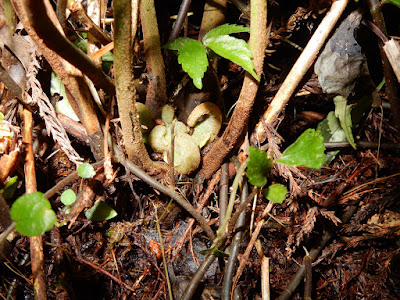
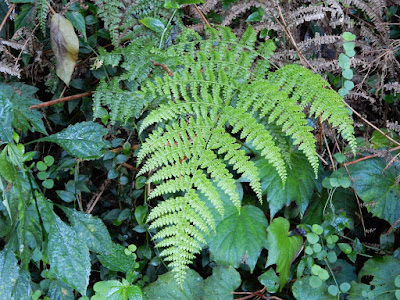
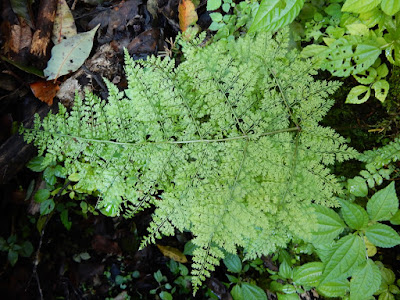
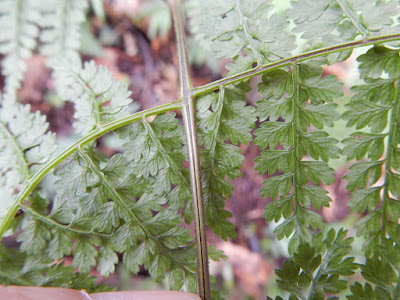
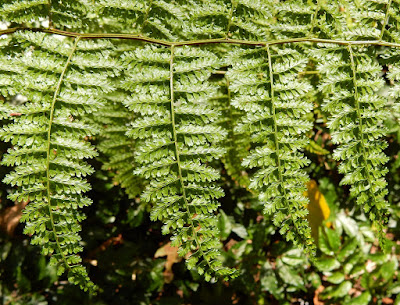
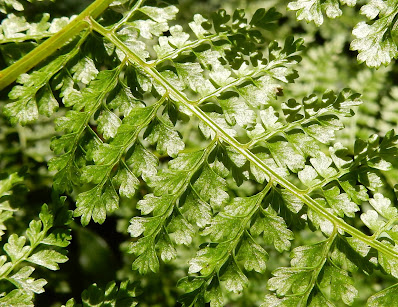
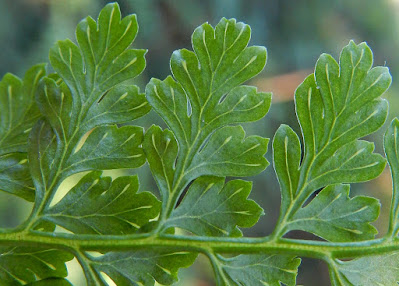
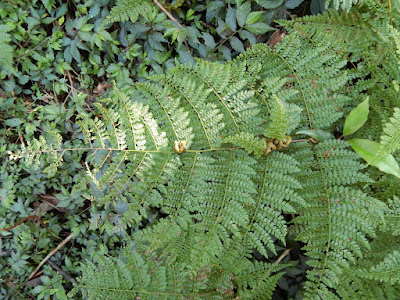
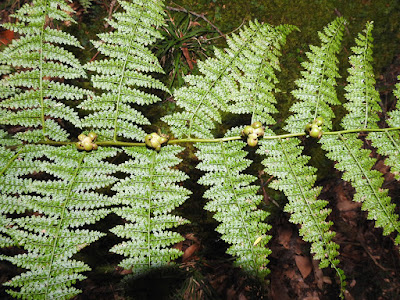

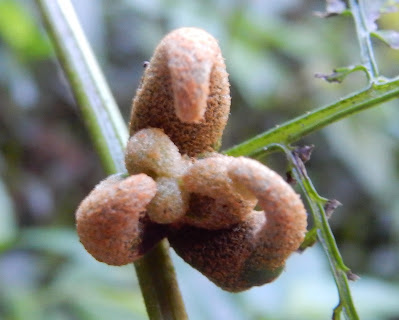
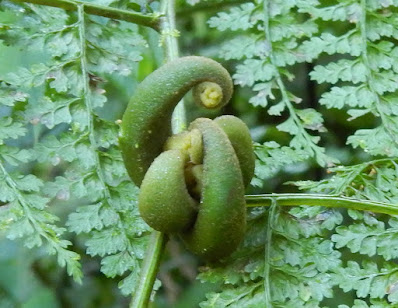


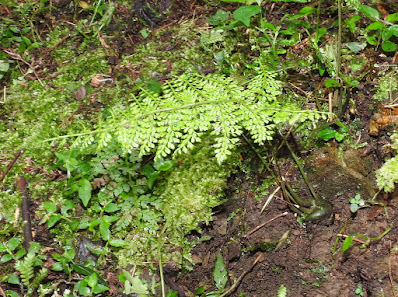
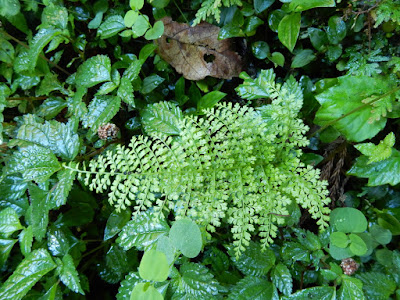
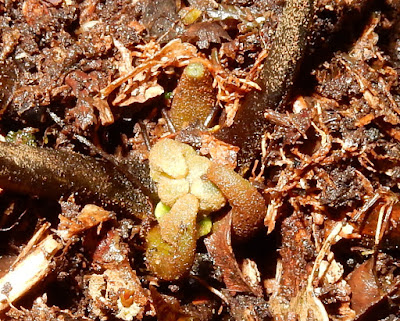

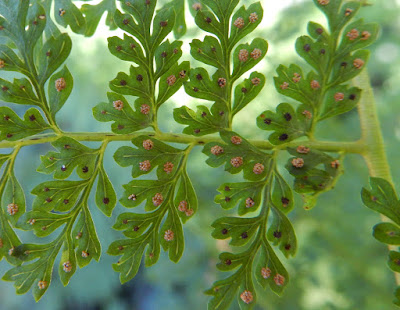
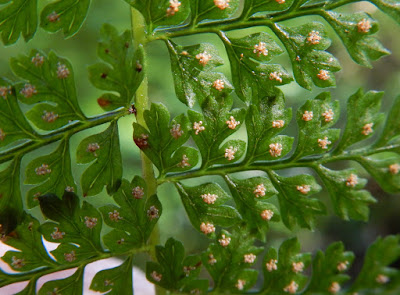
沒有留言:
張貼留言